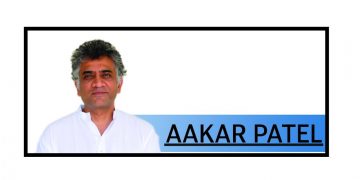New Delhi: Aviation in India has attracted entrepreneurs like moths to a flame but only a few have managed to survive and thrive in a sector which has become the graveyard of all kinds of airline business models — budget, full service and hybrid.
Kingfisher was one of the biggest private initiatives but it failed. Jet Airways, which is considered an iconic brand, has come crashing down. Before that, many airlines folded up within few years of their launch and initial success. Notable among these are East-West, ModiLuft, Damania Airways and Madurai-based Paramount Airways. The reasons of closure ranged from rift with partners (in case of ModiLuft) to cash crunch and regulatory challenges.
The collapse of Jet Airways, which was the industry mascot not so long ago, is indicative of the larger menace in the system that has led to many private carriers down the path to oblivion.
So far, this full service airline had been the longest-running private carrier, having established itself as a formidable brand that is recognised internationally. At its peak, Jet operated a fleet of 124 aircraft till a few months ago.
The sudden collapse of Jet Airways has come as a big surprise to many aviation experts as the airline had said just a year back that it would consider bidding for a stake in debt-laden Air India.
A year is certainly a long time in aviation given that even a small shock can pull an airline down. India, however, is a different market and notorious for its high operating costs and low airfares.
“Fares offered by Indian carriers are among the lowest in the world. Even 10-15 years ago the fare was the same or even higher than today!” said Rajan Mehra, former India head of Qatar Airways and an aviation veteran.
The high operating costs and pricing wars definitely are the key reasons for the fall of many carriers but there are other causes too. Deloitte India Partner Peeyush Naidu believes that the management of individual companies are ultimately responsible for their airlines’ success and failures.
“While there certainly are some industry-wide factors impacting costs and performance for airlines in India – like sudden, sustained increase in crude oil prices, taxes on ATF (jet fuel), infrastructure bottlenecks at certain key airports – for an airline to compete in a commercial space based on government bailouts, the management of individual airlines has a more important bearing on ensuring viability and growth.
“IndiGo airlines would be a case in point in the Indian context,” Naidu said.
“One thing certain, however, is that promoters need deep pockets to run an airline business in India. The public sector Air India is there because government has pumped in thousands of crores into the company,” said an executive of a low-cost airline suggesting, thereby, that huge subsidies distort the market.
In spite of cost-heavy structure, the national carrier has been in the business for decades, while casualties in the private sector mount. While Air India has continued to remain in the business, major private carriers — Air Deccan, Kingfisher, Air Sahara (acquired by Jet Airways and rechristened JetLite) and Jet Airways — have gone with the wind.






































